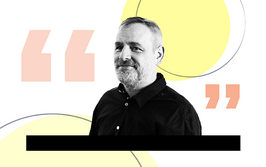The Status Quo of Oligonucleotides Is Not the Future
The science of oligonucleotides is advancing, and advanced manufacturing techniques are needed to optimize their impact
| 7 min read | Interview
sponsored by Asahi Kasei Bioprocess

Brian Crawford

Doug Chritton
Historically, oligonucleotide therapies have targeted small patient populations with rare conditions, but with excitement growing in tandem with the potential of the treatments themselves, innovators are looking to target indications with larger numbers of patients.
When one particular company was looking to optimize a manufacturing space for oligonucleotide manufacturing, Asahi Kasei Bioprocess (AKB) and CRB were invited to offer expertise in terms of the floor design and process equipment. The focus of the project: improving quality, purity, and output, while minimizing environmental impact. Here, AKB Vice President of Operations Brian Crawford and CRB Process Engineer Doug Chritton tell us more.
What are the big trends in oligonucleotide manufacture?
Doug Chritton: CMOs are building out capacity to support these drugs and capacities are also being boosted on the clinical side with an eye to even larger throughput in the future. There’s also interest in advancing production techniques. The traditional way of building a molecule – one nucleotide at a time on solid phase supports – is no longer the best approach; it uses a lot of solvents, isn’t sustainable, and isn’t designed to produce quantities to suit the demands of a large patient population.
We’re now seeing a push for enzymatic synthesis to link molecules and reduce the number of harmful chemicals and flammable liquids, while also increasing yield.
For example, if a 20 nucleotide long oligo product (20-mer) is 98 percent effective at every linkage, you have around a 67 percent yield, which isn’t great but is acceptable for drugs targeting small patient populations. As we look at longer chains and larger populations, however, that yield becomes less feasible. A 100-mer, for an application such as a guide RNA for CRISPR therapies, may only have around a 13 percent yield. These longer chain molecules aren’t necessarily targeting large patient populations, but would still benefit from enzymatic production methods and improved yields. There is also room to improve other manufacturing steps. Advanced drying techniques, such as spray drying, are seeing increased attention, as are enhanced purification methods.
The industry is recognizing that the status quo is not a sustainable production approach if we need large quantities of oligonucleotide therapies in the future.

What are the main challenges in optimizing a manufacturing space for oligonucleotides?
Brian Crawford: The oligonucleotides field is booming, but there is a dearth of experienced personnel for this emerging modality. And it is always a challenge to outfit a facility for current state-of-the-art manufacturing methods, while also considering and building flexibility for future manufacturing advances. It is important to keep advanced methods in mind. Whether enzymatic processes, liquid phase synthesis, building the sequences with nucleotide triphosphates rather than phosphoramidites, there are all kinds of advanced manufacturing techniques that could be employed to solve the current challenges being seen in oligo manufacturing.
You are also best finding a partner who is familiar with the challenges. There are many aspects to consider – and many timelines must converge – to get a new manufacturing space qualified and ready to go. You must consider local government permits, inspections timing, associated utility supply and piping, HVAC, qualification, construction of warehouse space and storage, supporting labs for product testing and clearance, and more. Simply ensuring that essential equipment can fit into elevators, through halls and corridors, and into the appropriate room is often overlooked!
Collaborating with an experienced partner brings familiarity and expertise in navigating all challenges. Scale up is not always about making everything bigger. The emphasis should be on increasing throughput, yield, and purity, which can increase the amount of product manufactured without requiring infinitely scalable machines.
How does the complementary expertise of both companies come together in the project in question?
DC: CRB was initially asked to perform a small gap analysis for a client involving an oligonucleotide project, including a review of the facility and potential improvements, and then was hired to design support systems, such as solvent supply, reagent supply, buffer preparation, and waste handling systems. AKB was tasked with providing a large portion of the process equipment. Both companies worked closely together to ensure the equipment fit the facility and supported the needs of the client.
Even before this project, we already had a collaborative relationship where we would often share trends and help each other understand what clients need and want.
BC: AKB and CRB are aligned in solving shared customers’ manufacturing challenges in a way that drives the industry forward. On this project, we were selected as the equipment supplier for three of the manufacturing lines. Our history with CRB was advantageous because they already had experience with our equipment, understanding how we can tie it into the plant-wide controls and ancillaries that feed manufacturing processes.

What were some of the big discussion points in the project?
BC: There were discussions around how the customer wanted to approach the plant-wide controls for data management, including considerations for the future, such as further automation, industry 4.0 initiatives, and space planning. Indeed, a great deal of space planning went into the design of our oligosynthesizer, our UF/DF systems, and chromatography purification systems to make sure that they fit into the vision for the customer.
DC: In oligo facilities, handling corrosive halogenated waste is a huge discussion point. If you put the deblock or detritylation reagent undiluted into a stainless-steel piping system, then you’ll have issues with corrosion. It’s a very hazardous safety and environmental issue. Halogenated waste is a small portion in comparison, so evaluating the trade off is something that needs to be weighed carefully.
What will define the success of this project?
BC: Thus far, the project has been a success in that we’ve been able to handle shifting priorities and keep everything on-track or ahead of schedule. The real success will be defined by the customer when their first batches of clinical and process-scale oligonucleotides are complete. From an equipment standpoint, we know we’re on track as two full pilot scale trains are installed and qualified. The process scale train is currently in validation testing and everyone is very happy so far! We do recognize, however, that this is just the start. We’re now shifting focus to operator training and setting them up for success prior to production. The aim is to contribute as much as we can by ensuring the equipment is set up optimally and ready to run.
The Medicine Maker Presents:
Enjoying yourself? There's plenty more where that came from! Our weekly Newsletter brings you the most popular stories as they unfold, chosen by our fantastic Editorial team!
What are your top tips for optimizing an oligonucleotide manufacturing space?
DC: For contract manufacturers, flexibility is key. Don’t design your facility by honing in on existing processes; 5–10 years down the road, you will need to either add, change, or modify your equipment and facility. Think about how you can accommodate that by planning, planning, and planning some more! Consider not just the process, but the entire operation.
BC: I agree. Knowing what the ideal use case is and planning for change over time is important. Keeping operations in sequence, thinking about critical interfaces between the building, the operator, and the ancillary support systems are also key focal points. At AKB, we focus on developing systems for these challenges that also save down-time, floor space, and drive up the production capacity for customers.
What are your thoughts on the future of oligo drug development?
BC: I’m excited because of what these treatments represent. Rather than palliative or symptomatic treatments, oligos can be curative – whether through gene silencing or RNA interference. There are many developments targeting rare diseases that have no treatment, but it’s also exciting to think about using oligos in diseases with potentially hundreds of millions of patients.
We’re also seeing more breakthroughs in effective delivery to tissues and we will see more approvals in the future. The status quo will be pushed to one side; the state-of-theart will be pushed further. It’s exciting, on a professional level, to be able to contribute and help drive the field forward.
When it comes to manufacturing, I don’t think there will be a single, golden manufacturing approach. It will likely be hybrid – or possibly something new that hasn’t been considered yet. But whatever the approach, it seems clear that there will be an emphasis on larger scales, greater efficiency, and improved sustainability.
DC: Oligonucleotides with conjugates is really exciting. New targeting ligands are starting to unlock parts that have been difficult to treat; access to these targets will create new treatment options. By conjugating to an oligonucleotide, we can harness a long duration of action or potential curative action to treat diseases with unmet needs. As we find more conjugates, the oligo targets will diversify to other organs too, resulting in even faster growth of the market segment.
If we draw comparisons to monoclonal antibodies, there were just a handful of approved therapies 25 years ago. Today, there are over 120. We’re on the edge of that with oligonucleotide treatments.
Find out more at https://fluidmgmt.ak-bio.com/



















